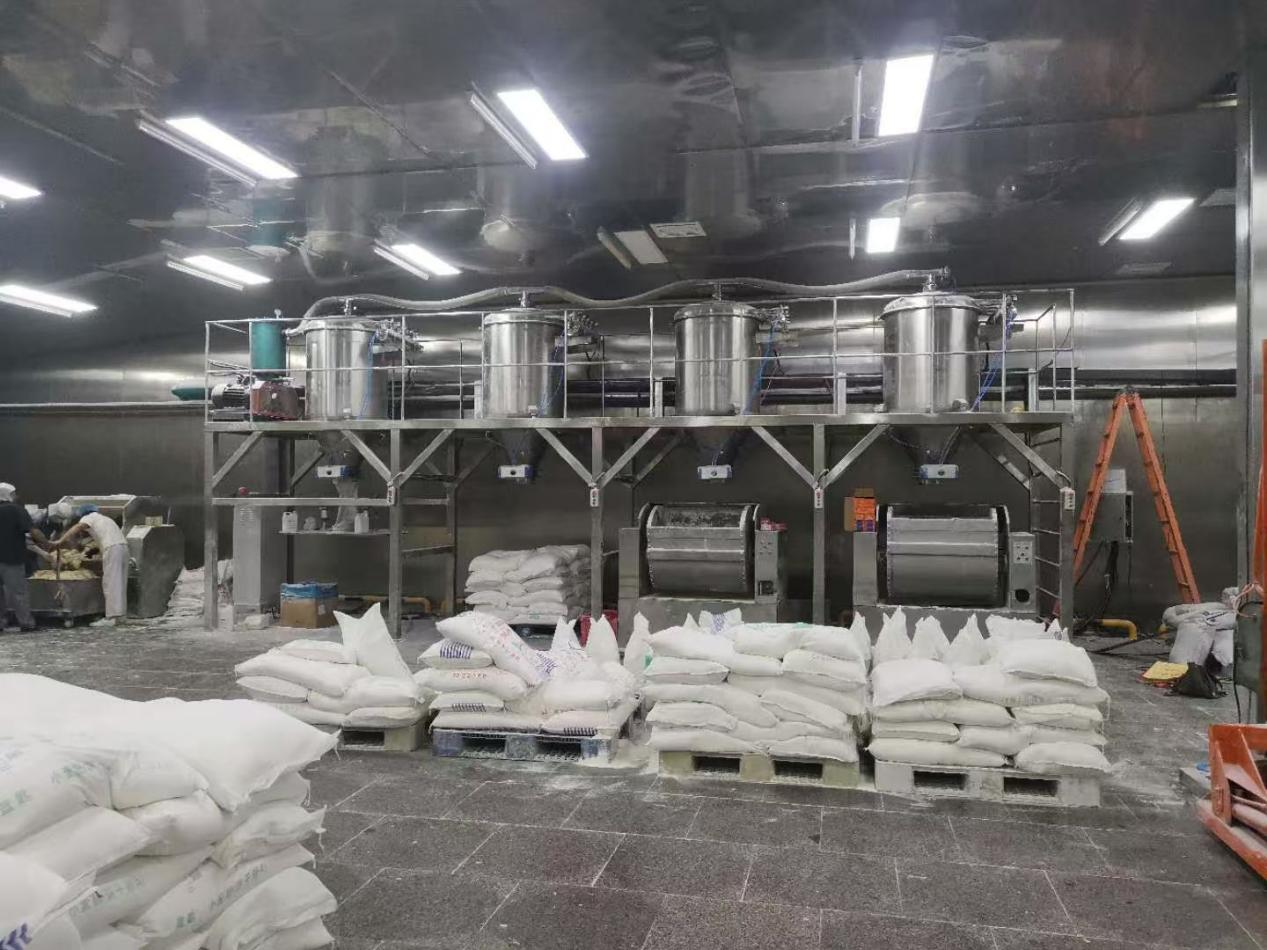The flour milling industry, a cornerstone of global food production, faces persistent challenges in handling its primary product: fine, dusty, and potentially explosive wheat flour. Traditional mechanical conveying methods like screw conveyors or buc...

The flour milling industry, a cornerstone of global food production, faces persistent challenges in handling its primary product: fine, dusty, and potentially explosive wheat flour. Traditional mechanical conveying methods like screw conveyors or bucket elevators often contribute to dust explosions, product degradation, cross-contamination risks, and high maintenance costs. Vacuum conveying systems have emerged as a transformative technology, addressing these critical issues and setting new standards for safety, hygiene, and operational efficiency in flour handling.
Handling flour presents unique difficulties:
1. Flour dust is highly combustible, requiring stringent explosion protection measures (ATEX/DSEAR compliance).
2. Fine particles easily become airborne, creating hazardous work environments, contaminating equipment, and leading to significant product loss.
3. Preventing cross-contamination between different flour types (e.g., white, whole wheat, specialty flours) or with allergens is paramount. Residual flour in equipment can spoil or attract pests.
4. Aggressive mechanical handling can damage starch granules or alter protein structures, potentially impacting baking performance.
5. Dust ingress into bearings and moving parts of traditional conveyors increases wear, downtime, and cleaning complexity.
6. Routing conveyors around existing mill structures can be challenging.
Vacuum powder handling systems provide a closed-loop, automated solution specifically engineered for flour's demanding characteristics:
1. The sealed pipeline inherently contains any potential primary explosion.
Systems integrate explosion vents, isolation valves (flap or chemical), and pressure shock-resistant construction to safely divert pressure and flame.
Components feature grounding, anti-static tubing/filters, and inerting options (e.g., nitrogen purging) to prevent static discharge ignition.
Designed and certified according to relevant Zone 20/21 requirements.
2. Flour moves entirely within sealed pipelines (typically stainless steel or food-grade conductive polymer), drastically reducing airborne dust at transfer points.
Industrial bag filters or cartridge filters with automatic reverse-pulse cleaning capture >99.9% of fines, returning them to the process stream. HEPA options are available for stringent hygiene areas.
3. Smooth internal surfaces, minimal dead zones, radiused corners, and polished finishes (e.g., Ra < 0.8 µm) prevent flour buildup and facilitate cleaning.
Full Clean-in-Place capability with spray balls or flush connections ensures thorough sanitation without disassembly.
Dedicated systems or easy cleaning between batches/flour types prevents unwanted mixing and allergen cross-contact.
4. Optimized vacuum levels and pipeline design minimize particle impact and shear forces, preserving flour quality and functional properties.
5. The primary moving part is the vacuum generator (blower or pump), significantly reducing mechanical wear points compared to screw conveyors or elevators.
Sealed design prevents flour ingress into critical components, extending lifespan.
6. Pipelines can navigate complex layouts vertically and horizontally, bypassing obstacles with minimal space requirements.
Seamless integration with PLCs allows for automated transfer sequences from silos, bulk bags (FIBCs), or process hoppers to packing lines, blenders, or other destinations. Load cells ensure precise batching.
ABC Flour Mills faced recurring dust issues and explosion risks at the critical transfer point between their final storage silos and automated packing lines. Downtime for cleaning and safety concerns were impacting output. They implemented a centralized vacuum conveying system:
Multiple pick-up points connected to the bottom of dedicated flour storage silos (white, whole wheat, cake flour).
ATEX-certified vacuum pumps with explosion vents and isolation valves. Conductive tubing with static grounding.
Large, reverse-pulse jet filter receivers with HEPA safety filters.
Multiple receiving hoppers above the respective flour packing machines (25kg bags, 1-ton totes).
Operators select the flour type and packing line on the HMI. The system automatically draws the required flour from the designated silo, conveys it dust-free through the pipeline, filters it, and discharges it accurately into the packing machine hopper. Batch weighing is integrated. The system automatically purges lines when switching flour types.
Eliminated visible dust clouds at transfer points. Achieved full ATEX compliance, significantly mitigating explosion risks. Improved worker respiratory safety.
Drastic reduction in environmental contamination and cross-contamination between flour types. Consistent product integrity maintained.
Packing line uptime increased by 15% due to reduced cleaning requirements and fewer dust-related machine jams. Faster product changeovers.
Flour loss due to airborne dust reduced by over 95%.
Downtime and costs associated with maintaining screw conveyors and bucket elevators eliminated.
Reduced labor for manual transfer supervision and intensive cleaning.
Vacuum conveying technology is revolutionizing flour handling, moving beyond being merely an alternative to becoming the standard for safe, clean, and efficient modern milling operations. By effectively containing explosive dust, preventing cross-contamination, preserving product quality, reducing maintenance burdens, and enabling flexible automation, vacuum systems directly address the core operational, safety, and regulatory challenges of the flour industry. For mills aiming to enhance productivity, ensure worker safety, meet stringent hygiene standards, and protect their valuable product, investing in vacuum conveying is a strategic imperative for sustainable and competitive flour production.